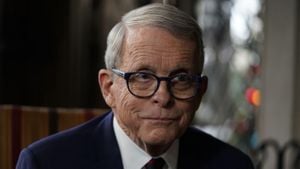Art has long served as both reflection and instigator of cultural and political change, and few periods encapsulate this dynamic as effectively as the Mexican Revolution. An upcoming exhibition titled Revolutionary Realism: Prints and Portraits after the Mexican Revolution is set to illuminate this pivotal era of artistic expression. Opening to the public at the Emile H. Mathis Art Gallery, this show will explore how the ideals of revolution and the struggles for identity shaped the artistic traditions of 20th-century Mexico. Focused on the vibrant mediums of prints and portraiture, the exhibition features compelling works by iconic artists such as Diego Rivera, Leopoldo Méndez, and Francisco Toledo, among others.
Scheduled to run from December 9 through February 20, 2025, the exhibition was curated by graduate students from the ARTHIST 704: Intro to Art Museum Studies II course. This collaborative effort not only showcases art but also serves as a learning experience for these students, who have engaged deeply with methodologies such as exhibition organization and educational programming. The exhibit will be open to the public Monday through Thursday from 10 AM to 4 PM, with no admission fee required.
Art enthusiasts and history buffs alike are likely to find this exhibit intriguing as it provides insight not only to the works themselves but also to the socio-political circumstances surrounding their creation. The visual language articulated through prints and portraits bore significance and representation during and after the revolution, allowing artists to engage with themes surrounding labor, identity, and national pride.
One key highlight of Revolutionary Realism is its focus on how Mexican printmaking became a means of communicating revolutionary ideals to wider audiences. Following the revolution, art became more than just aesthetic expression; it transformed itself as a tool for social commentary. The works of Rivera, for example, allow viewers to grasp the aspirations of post-revolutionary Mexico through its visual narratives, sparking conversations about class struggles, cultural identity, and national consciousness.
Rivera’s significance as both artist and political figure cannot be understated. His artistic endeavor was closely intertwined with his political ideologies, often catalyzing dialogue about social change. Known for his large-scale murals, Rivera’s ability to symbolize and portray the plight of the working class remains central to his legacy. The exhibition will showcase selected works, perhaps inspiring connections between Rivera’s past and contemporary social issues.
Meanwhile, Leopoldo Méndez and Francisco Toledo reflect broader artistic trends and variations among Mexican artists of the 20th century. Their prints often showcased the struggles and realities faced by the populace, bearing witness to the socio-political landscapes of their time. Méndez’s powerful prints resonate with themes of labor rights, shining light on immense struggles faced by working-class citizens.
Toledo, on the other hand, turns toward indigenous imagery and critiques of modernity. His works—often mixing tradition with contemporary thought—invite inquiries about cultural legacy and representation within the rapidly modernizing society post-revolution. Together, these artists provide powerful historical reflections to understand Mexico’s turbulent yet rich background.
The exhibition is more than just an opportunity to appreciate breathtaking visual art. For the curators, it has also been about fostering knowledge and skill development within art history, particularly for students aiming to carve careers within museums and galleries. It encourages new generations to connect and learn from the past, reinvigorate discussions about what art means within historical contexts, and promote inclusivity and accessibility within cultural institutions. This dedicated focus on education as part of the exhibition is foundational to the philosophy behind the course and the Art History Department at UWM.
With art serving as both evidence and agent of change, it’s important to recognize how these exhibitions allow collective memories and reflections to flourish. Educators and students alike can engage with the past through these artistic lenses, drawing parallels and contrasts with current realities.
Beyond its academic and artistic relevance, the exhibition invites visitors of all backgrounds to engage with the narrative of the Mexican Revolution through the visual arts. Organizers hope to spark dialogues about identity, revolution, and the role of art as both historical documentation and commentary.
Come January 22, the exhibit will re-open and will be viewed alongside other related programs aimed at enhancing visitors' experiences. This comprehensive approach intends to broaden audiences' comprehension and appreciation of Mexican art before and after the revolution, underlining its importance to both local and global art history.
For anyone interested in gaining insight not just about the art but the stories behind them, Revolutionary Realism: Prints and Portraits after the Mexican Revolution is set to be both enlightening and engaging. It’s not only about paintings on walls but the revolutionary spirit captured within those strokes and colors, calling for reflection on what it means to resonate with identity and place.
If you’re excited about exploring how artistic expressions encapsulate monumental historical shifts, mark your calendars for the opening of this captivating exhibition.



